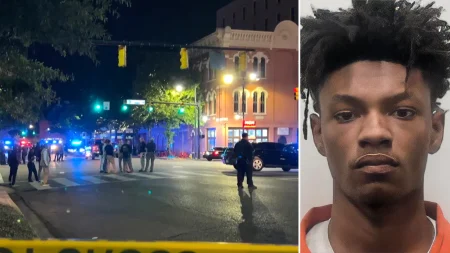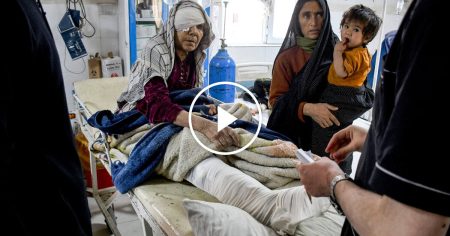A Son’s Tragic Descent: The Horrifying Case of Ernestina Lucero’s Murder
In a disturbing case that has shocked the Albuquerque community, 49-year-old Leroy Vallejos now faces first-degree murder charges for allegedly killing and dismembering his 69-year-old mother, Ernestina Lucero. The gruesome discovery came after a welfare check at Lucero’s home revealed human remains stored in a freezer. Vallejos is currently being held under preventative detention at the Bernalillo County Metropolitan Detention Center, facing multiple charges including battery, battery of a household member, and tampering with evidence. The case highlights the devastating intersection of potential mental health issues, family violence, and the failure of support systems that might have prevented this tragedy.
The investigation began when family members reported Lucero missing, prompting the Albuquerque Police Department to issue a missing person bulletin on October 23. The situation took an unsettling turn when Vallejos reportedly contacted a healthcare company to request payment for his mother’s care while simultaneously claiming she had been missing for about a week. This contradictory behavior raised immediate red flags, leading authorities to conduct a welfare check at Lucero’s residence. During this visit, Vallejos told officers his mother had gone to Mexico, but her prescriptions remained in her bedroom—an unlikely scenario for someone planning an extended trip. The officers’ discovery of garbage bags containing human remains in a large freezer, along with a bloodstained saw found under a sink, painted a horrifying picture of what had actually occurred.
According to police reports, Vallejos eventually admitted to an officer that he had choked his mother to death nearly three weeks before his arrest. His explanation for this unthinkable act reveals a deeply troubled mindset—Vallejos allegedly claimed his mother was part of a “group of people giving their lives to darkness” who were conspiring against him. These paranoid delusions suggest serious mental health issues that may have gone untreated or unaddressed, potentially representing missed opportunities for intervention that could have saved Lucero’s life. The admission provides a chilling glimpse into the distorted thinking that preceded this violent act, raising questions about how someone could commit such a crime against their own mother.
Financial improprieties surrounding the case add another troubling dimension to this tragedy. Preliminary investigations revealed that Vallejos had allegedly withdrawn money from his mother’s account after her death. Additionally, investigators discovered that Lucero’s vehicle had been sold before she was even reported missing, suggesting a calculated effort to benefit from her absence while concealing her fate. These actions point to a level of premeditation that contrasts with the seemingly delusional justification Vallejos provided for the murder. The combination of financial exploitation and violence represents a particularly heartbreaking betrayal of the mother-son relationship and the trust that should exist between family members, especially in caregiving situations.
The case has sent ripples of shock through the Albuquerque community, where neighbors and acquaintances are likely struggling to reconcile the ordinary appearances of the household with the horror that allegedly took place inside. For those who knew Lucero as a 69-year-old woman going about her daily life, the violent end to her story is incomprehensible. This disconnect between public perception and private reality is common in cases of family violence, which often occurs behind closed doors with few warning signs visible to the outside world. The welfare check that uncovered this crime demonstrates the crucial role that community vigilance and professional intervention can play in addressing domestic violence, even if, in this tragic case, the help came too late for Ernestina Lucero.
As the investigation continues, many questions remain about how this situation developed and whether there were missed warning signs or opportunities for intervention. The alleged dismemberment of Lucero’s body represents an extreme attempt to conceal evidence, suggesting a disturbed state of mind that likely developed over time rather than emerging suddenly. For community members and policymakers alike, this case underscores the importance of robust mental health services, elder abuse prevention programs, and domestic violence intervention strategies. The tragedy of Ernestina Lucero serves as a stark reminder that behind closed doors, vulnerable individuals may be at risk from those who should be their protectors, and that society has a collective responsibility to develop better systems for identifying and addressing these dangers before they escalate to violence and loss of life.












